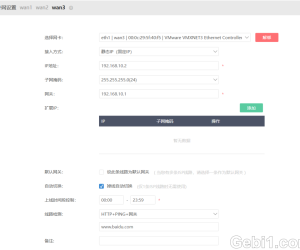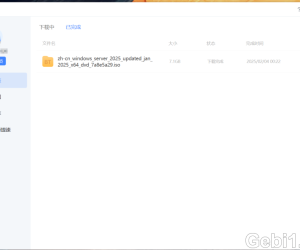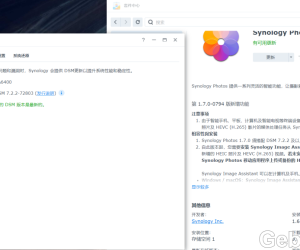[其他] goflex home 希捷nas 安装 Transmission |
|
本帖最后由 lionor 于 2012-8-20 18:39 编辑
刚刚在 京东买的希捷 goflex home ,2TB, NAS, 很帅。998人民币,性价比极高,,1.2GHz ARM,128M RAM. 最爽的是还有usb.... 可以接*****头,硬盘,打印机等。 比西数的那个性价比高多了!!! 今天在折腾,分享如下: 第一步 root Getting started - with Windows XP/Vista/7 If you're doing all this from a windows computer: First download PUTTY.exe (an SSH client) from http://www.chiark.greenend.org.uk/~sgtatham/putty/download.html Instead of entering all the above in one line, run Putty and connect to the IP of your Stora on port 22, then enter the username and password separately when prompted exactly as explained above (i.e. USERNAME_hipserv2_netgear_XXXX-XXXX-XXXX-XXXX). You can save the settings in putty so you don't have to type the username every time (look under Connection > Data > Auto-login username) After logging in everything works the same as a Linux SSH client, you can do everything from windows if you want! Notes The "hipserv2_netgear" part may be different for some users, although I suppose is the same for everybody, if you already hacked your Stora using other ways I'd ask you to check the "/etc/oe-release" and post here the DistName line and we'll try to figure it out. (see also: Original forum post) For Seagate GoFlex Home use seagateplug, e.g.: ssh USERNAME_hipserv2_seagateplug_XXXX-XXXX-XXXX-XXXX@YOUR_IP_ADDRESS 第二部安装 package manager Introduction A package manager, for the uninitiated is a way of installing and maintaining software on a computer system. In the context of the stora, it allows you to easily download, install and update programs. It will also remove programs that you no longer want. The package manager we're going to use is called Optware which was originally created for NSLU2 and it allows you to install additional software on your stora without interfering with original firmware. The Optware project supports several architectures including that of the stora and the repository (where the package manager downloads everything from) we're going to use seems to work quite nicely with the stora. It's worth noting that certain programs have caused a few problems, although that was from a different repository that's less compatible. See the forum thread here for more details. How to install Preparatory Stuff In order to install optware we're going to need to do a few preparatory things first. Logging In If you haven't looked at this already, you'll first of all need to log into the Stora via ssh[1]. What is also worth doing is installing the official OpenSSH server which works better and doesn't require such a long username[2]. Moving /opt to the hard disk NAND flash memory has a limited number of reads and writes, and this is what the firmware of the stora is saved on. Seeing as the usage of a package manager will increase the amount of wear and tear on the card, we're going to move /opt which is where all the programs used by the package manager will be stored to the hard disk. Firstly we need to create persistent root access: 1. sudo -E -s Next, we need to copy the contents of the old opt directory to the new location. In this example I've put the opt folder in home (/home/opt). 1. cd / 2. cp -r /opt /home/opt All going well, the contents of /opt should now be copied to /home/opt. The next thing to do is to create a symbolic link in the root directory to the new folder so that everything that is written to opt is stored on the hard disk. 1. mv opt opt-old 2. ln -s /home/opt /opt With that done we're now ready to actually install Optware and most importantly, it's lovely package manager, ipkg. Installing Optware First, we're going to create a folder in your home directory to download ipkg to, and then download it. 2. cd ~ 3. mkdir ipkg 4. cd ipkg 5. wget http://ipkg.nslu2-linux.org/feed ... 0.99.163-10_arm.ipk You should see some stuff downloading. Now we're going to unpack the files we need: 6. tar -xzf ipkg-opt_0.99.163-10_arm.ipk 7. cp ./data.tar.gz /data.tar.gz 8. cd / 9. tar -xzf data.tar.gz 10. rm data.tar.gz Now we're going to set up and install ipkg: 11. echo src cs08q1armel http://ipkg.nslu2-linux.org/feed ... 1armel/cross/stable >> /opt/etc/ipkg.conf 12. /opt/bin/ipkg update All going well, you should see this: Downloading http://ipkg.nslu2-linux.org/feed ... oss/stable/Packages Updated list of available packages in /opt/lib/ipkg/lists/cs08q1armel Successfully terminated. NB If you want to live more dangerously and/or need newer packages, you could use the unstable branch of ipkg instead. To do so simply replace "stable" with "unstable" in steps 5 and 11 above: 5. wget http://ipkg.nslu2-linux.org/feed ... 0.99.163-10_arm.ipk and 11. echo src cs08q1armel http://ipkg.nslu2-linux.org/feed ... rmel/cross/unstable >> /opt/etc/ipkg.conf Optional Extra Steps These extra steps aren't necessary but for me at least, are quite handy. Installing Nano This step is strictly optional but if you're not a fan of vi then nano is a much more straightforward text editor to use and will come in handy for editing lots of configuration files. Note: If you have logged out since installing ipkg, then you will need to use sudo to execute the commands as root. 1. /opt/bin/ipkg install nano All going well, nano should now be installed. Editing the PATH variable When I did this, the 'environment' file which is where you store the environment variable was empty. You can check this for yourself by doing the following: 1. sudo /opt/bin/nano /etc/environment If the file is empty If you don't edit the PATH variable then you will have to enter the full path of the executable you want to run every time you run it. The PATH variable is held in /etc/environment and when I looked that file was empty. First, you need to do copy the text below: PATH=/usr/local/bin:/usr/bin:/bin:/opt/bin:/usr/sbin:/opt/sbin:/usr/sbin:/sbin Copy the above to your clipboard (sometimes its helpful to paste into a text file on your PC first to make sure the line is clean, then select and copy from there) With /etc/environment open in Nano, Ctrl+0 to paste the above text into the file, Ctrl+X to exit, Y to save and confirm filename Now (or when you open a new SSH session), you will be able to type program names e.g. "nano", without the path, and your Stora will be able to find them for you. If the file is not empty If the file is not empty all you need to do is to add this directory to the end of the PATH variable. /opt/bin:/opt/sbin Whether the PATH variable is there or not, you'll need to log out and log back in again once you've finished editing the PATH settings. If that doesn't work, you'll need to reboot which you can do by entering the following command. You can do this via ssh by entering the command: sudo reboot After all that you should have a working Optware install and should be easily able to execute any programs you install. Root user path If you want to be able to switch to a root user with sudo -i, for example, then you'll find the root user gets their PATH variable munged! Seems like it promotes the 'sbin' paths ahead of the 'bin' paths. For me it had the effect of removing the /opt/sbin and /opt/bin entries. I hacked the munging script directly with: sudo -i /opt/bin/nano /etc/profile Then edited this section to read: # Path manipulation if [ "$EUID" = "0" ]; then pathmunge /opt/bin pathmunge /sbin pathmunge /opt/sbin pathmunge /usr/sbin pathmunge /usr/local/sbin fi Now when I switch to root user I still have a sane PATH to nano. Enjoy! Original article by guestus. ORIGINAL FORUM POST: here How to uninstall Uninstall a package As space and memory on the Stora is quite limited then you might want to uninstall a package, like so: sudo ipkg remove [package name] Uninstall the package manager First you have to unmount the /opt folder that was created on the hard drives umount /media/[path]/opt rm -rf /media/[path]/opt Then delete the package manager rm -rf /usr/lib/ipkg 第三部,哈哈,终于可以自动安装 软件啦!!! 取得root权限 然后, bash-3.2# /opt/bin/ipkg install transmission Installing transmission (2.61-1) to root... Downloading http://ipkg.nslu2-linux.org/feed ... sion_2.61-1_arm.ipk Installing openssl (0.9.8v-2) to root... Downloading http://ipkg.nslu2-linux.org/feed ... sl_0.9.8v-2_arm.ipk Installing libcurl (7.24.0-1) to root... Downloading http://ipkg.nslu2-linux.org/feed ... rl_7.24.0-1_arm.ipk Installing zlib (1.2.5-1) to root... Downloading http://ipkg.nslu2-linux.org/feed ... lib_1.2.5-1_arm.ipk Installing libevent (2.0.19-1) to root... Downloading http://ipkg.nslu2-linux.org/feed ... nt_2.0.19-1_arm.ipk Configuring libcurl Configuring libevent Configuring openssl Configuring transmission Configuring zlib Successfully terminated. bash-3.2# 至此最新的2.61安装完毕!!! 秀一下吧:自动监控,自动限速(晚上在家限速的200k)见图 汗死,nas1上传图片总是出错,无语了。。。 今天还测试了下读写速度,环境如下:千兆路由+450兆无线。 goflex是用的千兆连的路由,电脑是450兆无线连的路由, 读取速度在26-28兆,写入速度为23-25兆。非常满意。如果用千兆连电脑估计还要快很多! 真是神器。性价比太高了。 过几天再测试外接usb的功能。 |
|
|
|
头疼啊,打开putty,第一步输入用户名就出错了,server unexpectly closed network connection,怎么回事呢,楼主
|
|
|
|
(i.e. USERNAME_hipserv2_netgear_XXXX-XXXX-XXXX-XXXX). You can save the settings in putty so you don't have to type the username every time (look under Connection > Data > Auto-login username)
谢谢楼主,按照这个,做到了,刚刚打开了root,得到了root权限。时间不够,还没有安装东西,先去睡觉 |
|
感谢楼主分享我成功了,分享步骤:
(这个安装optware步骤参考楼主回复我的帖子的这个链接http://www.openstora.com/wiki/index.php?title=Main_Page) A--putty入goflex,取得root,如下--- 入了putty,login as时候输入USERNAME_hipserv2_seagateplug_XXXX-XXXX-XXXX-XXXX (username就是你第一次装goflex时,软件提示你输入的帐号,后面的x指的是goflex底座贴纸上的product key)密码当然就是你当时设置的密码了 B-login后输入sudo -E -s 这个命令使你取得root帐号的权限,你也可以打开root,以后每次进入,直接用root 要启动root帐号在putty里面输入sudo passwd root 界面提示输入密码,可以输入一个较复杂的root密码,以后直接用root 来login 如果只想用一次root,输入这个命令来关闭root--sudo passwd -l root C-安装optware 利用sudo -E -s取得root权限后,输入 1. cd / 2. cp -r /opt /home/opt(复制opt目录到一个新位置,老外是这么做的,照做吧) (英文贴里这里还有几步,是移动文件夹的,但作者提出不要做这步,看了英文原贴的朋友就知道了) 3. cd ~ 4. mkdir ipkg 5. cd ipkg 6. wget http://ipkg.nslu2-linux.org/feed ... 0.99.163-10_arm.ipk 看系统提示,下载完成后,接着 7. tar -xzf ipkg-opt_0.99.163-10_arm.ipk 8. cp ./data.tar.gz /data.tar.gz 9. cd / 10. tar -xzf data.tar.gz 11. rm data.tar.gz 12. echo src cs08q1armel http://ipkg.nslu2-linux.org/feed ... 1armel/cross/stable >> /opt/etc/ipkg.conf 13. /opt/bin/ipkg update 做完这个,你应该看到如下提示-- Downloading http://ipkg.nslu2-linux.org/feed ... oss/stable/Packages Updated list of available packages in /opt/lib/ipkg/lists/cs08q1armel Successfully terminated. ok了,接着安装transmission,英文原贴我看不懂,比较复杂,我改用楼主的第一次贴的步骤- bash-3.2# /opt/bin/ipkg install transmission Installing transmission (2.61-1) to root... Downloading http://ipkg.nslu2-linux.org/feed ... sion_2.61-1_arm.ipk Installing openssl (0.9.8v-2) to root... Downloading http://ipkg.nslu2-linux.org/feed ... sl_0.9.8v-2_arm.ipk Installing libcurl (7.24.0-1) to root... Downloading http://ipkg.nslu2-linux.org/feed ... rl_7.24.0-1_arm.ipk Installing zlib (1.2.5-1) to root... Downloading http://ipkg.nslu2-linux.org/feed ... lib_1.2.5-1_arm.ipk Installing libevent (2.0.19-1) to root... Downloading http://ipkg.nslu2-linux.org/feed ... nt_2.0.19-1_arm.ipk Configuring libcurl Configuring libevent Configuring openssl Configuring transmission Configuring zlib Successfully terminated. bash-3.2# 注意putty到这时候还没有关闭过,我用winscp查看settings.json是否存在,找了一下没找到,我就借用了wxl改机教程中的一步 输入/opt/bin/transmssion-daemon -f 等了10多分钟,确定进程做完,然后ctrl + c 中断进程 再用winscp,这次找到了配置文件,主要是改下载地址: "download-dir": "\/root\/Downloads",改成"download-dir": "/mnt/eSata/MOVIE (这个MOVIE文件夹是我以前利用seagate自带软件创建的,在该软件里是在GoFlex Home Public下创建的而/mnt/eSata/就是你的goflex硬盘,这样,你才能将下载的高清电影放在硬盘里,这个路径是用winscp查看出来的) pex-enabled": true,改成"pex-enabled": false。(种子交换,下计流量PT的建议改成false,否则不改)我只用来pt,改成false,不知道其实要不要改,这个要高手指教。 "rpc-whitelist": "127.0.0.1",改成"rpc-whitelist": "192.168.*.*"。 其他默认设置。 好了,启动transmission- Putty里面输入/opt/bin/transmission-daemon 利用transmission remote连上去,ok,成功,立马下复仇者 验证一下,关机,拔掉网线和电源,再重启,再启动tr,成功,文件还在,下载速度很好。 好了,成功了,不懂排版,将就着吧,希望对大家有帮助了 |
 丢掉OPENWRT旁网关。ESXi下实现iKuai+OP双7129 人气#黑白群晖
丢掉OPENWRT旁网关。ESXi下实现iKuai+OP双7129 人气#黑白群晖 迅雷NAS版の邀请码770 人气#黑白群晖
迅雷NAS版の邀请码770 人气#黑白群晖 9月21更新DSM7.2.2AME完美解码!解决Survei27743 人气#黑白群晖
9月21更新DSM7.2.2AME完美解码!解决Survei27743 人气#黑白群晖 最新版Surveillance Station 9.2.0-11289支12554 人气#黑白群晖
最新版Surveillance Station 9.2.0-11289支12554 人气#黑白群晖